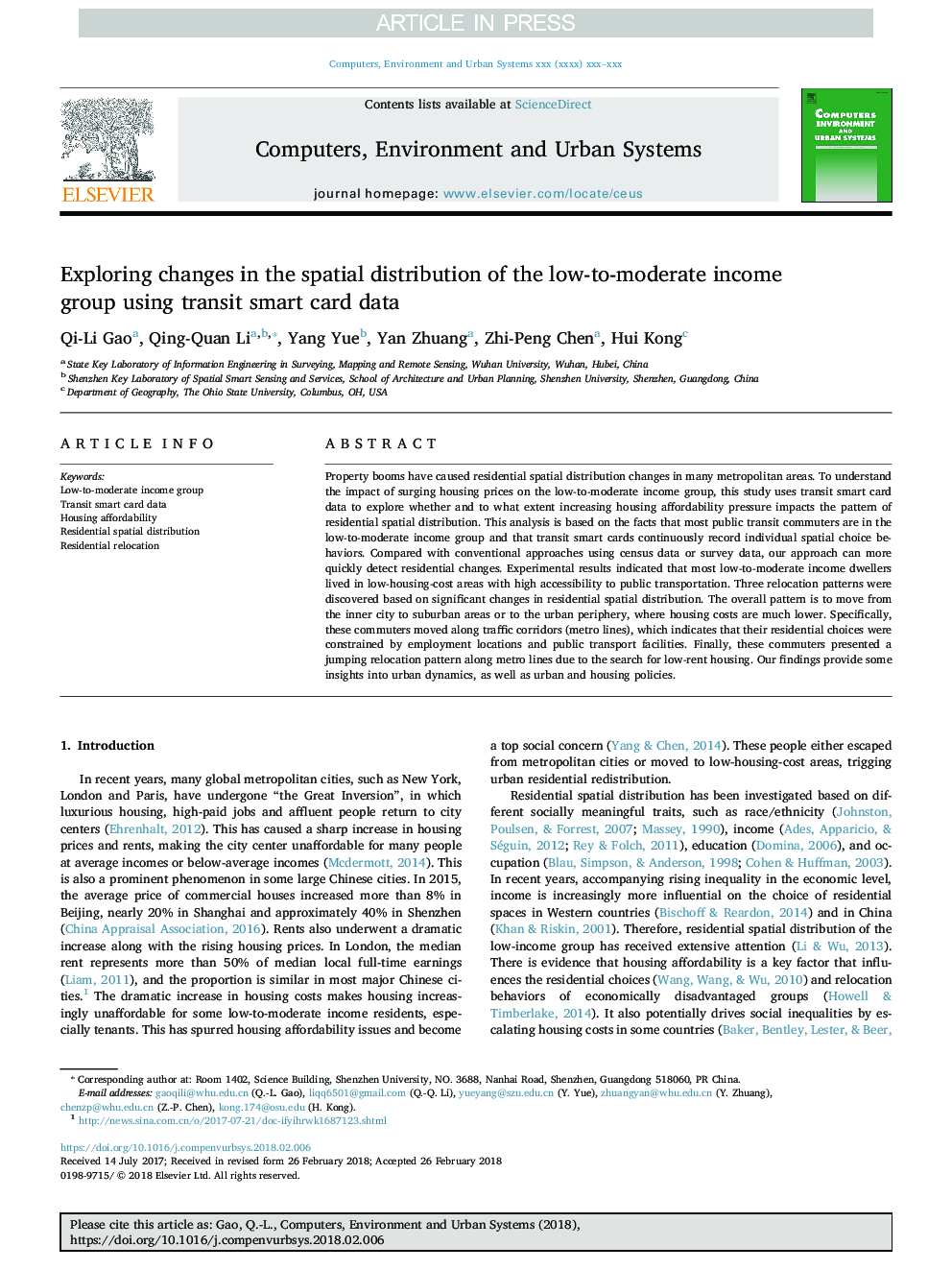| Article ID | Journal | Published Year | Pages | File Type |
|---|---|---|---|---|
| 10151462 | Computers, Environment and Urban Systems | 2018 | 10 Pages |
Abstract
Property booms have caused residential spatial distribution changes in many metropolitan areas. To understand the impact of surging housing prices on the low-to-moderate income group, this study uses transit smart card data to explore whether and to what extent increasing housing affordability pressure impacts the pattern of residential spatial distribution. This analysis is based on the facts that most public transit commuters are in the low-to-moderate income group and that transit smart cards continuously record individual spatial choice behaviors. Compared with conventional approaches using census data or survey data, our approach can more quickly detect residential changes. Experimental results indicated that most low-to-moderate income dwellers lived in low-housing-cost areas with high accessibility to public transportation. Three relocation patterns were discovered based on significant changes in residential spatial distribution. The overall pattern is to move from the inner city to suburban areas or to the urban periphery, where housing costs are much lower. Specifically, these commuters moved along traffic corridors (metro lines), which indicates that their residential choices were constrained by employment locations and public transport facilities. Finally, these commuters presented a jumping relocation pattern along metro lines due to the search for low-rent housing. Our findings provide some insights into urban dynamics, as well as urban and housing policies.
Related Topics
Physical Sciences and Engineering
Computer Science
Computer Science Applications
Authors
Qi-Li Gao, Qing-Quan Li, Yang Yue, Yan Zhuang, Zhi-Peng Chen, Hui Kong,
